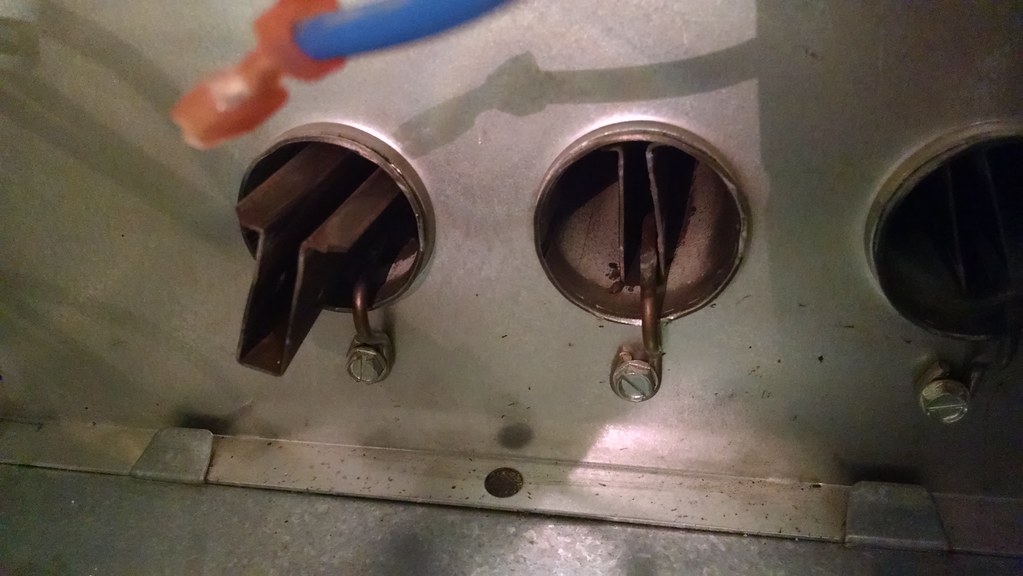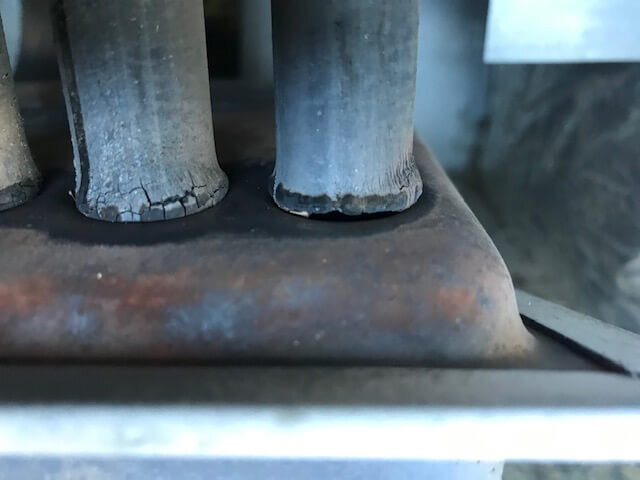A cracked heat exchanger can be a serious problem for your furnace. If you suspect that your heat exchanger is cracked, it’s important to have it inspected by a qualified HVAC technician as soon as possible. There are several signs that can indicate a cracked heat exchanger, including: strange noises coming from the furnace, soot or black dust on or around the furnace, inconsistent heating in your home, and excessive condensation on windows.
If you notice any of these signs, don’t hesitate to call a professional for an inspection.
If you have a gas furnace, one of the most important things to watch out for is a cracked heat exchanger. This component helps transfer heat from the burning gas to your home’s air, and if it cracks, it can release carbon monoxide into your living space. Here are some signs that your heat exchanger might be in trouble:
1. Your furnace is older than 20 years. While furnaces can last much longer than this, the heat exchanger is one of the first parts to wear out. If your furnace is on the older side, it’s worth having a professional take a look at it to check for any problems.
2. You see rust on the outside of your furnace. This could be a sign that there’s rust inside the heat exchanger as well, which means it could be starting to crack.
3. You hear strange noises coming from your furnace.
If you start hearing banging, popping, or hissing sounds coming from your furnace, it could mean that there’s something wrong with the heat exchanger.
4. Your energy bills have gone up suddenly. If your heating costs seem to be skyrocketing for no reason, it could be because hot air is escaping through a crack in the heat exchanger and not making its way into your home properly.
If you notice any of these signs, don’t hesitate to call a professional for help!
Watching A Furnace Run With A Cracked Heat Exchanger
How Do I Know If My Heat Exchanger is Cracked?
If your heat exchanger is cracked, you’ll likely see some telltale signs. For instance, your furnace may not operate as efficiently as it once did, or you may notice strange noises coming from the unit. Additionally, cracks in the heat exchanger can cause carbon monoxide to leak into your home, which can be very dangerous.
If you suspect that your heat exchanger is cracked, it’s important to have it inspected by a professional as soon as possible.
What Happens If Your Heat Exchanger is Cracked?
If your heat exchanger is cracked, it can cause a number of problems. First, it can cause your furnace to overheat, which can lead to a fire. Second, it can allow carbon monoxide to leak into your home, which can be deadly.
Third, it can reduce the efficiency of your furnace, leading to higher energy bills. Finally, it can simply break down and stop working altogether. If you have a cracked heat exchanger, it’s important to have it repaired or replaced as soon as possible.
Can You Run a Furnace With a Cracked Heat Exchanger?
If your furnace has a cracked heat exchanger, it is not safe to operate and should be replaced immediately. A cracked heat exchanger can leak carbon monoxide into your home, which can be deadly.
Can a Crack in a Heat Exchanger Be Repaired?
A heat exchanger is a device used to transfer heat between two or more fluids. The most common type of heat exchanger is the shell and tube type, which consists of a series of tubes through which one fluid flows and a shell around the outside of the tubes through which the other fluid flows. Heat exchangers are used in a variety of applications, such as heating water for domestic use, cooling engine coolant, and preheating air for furnaces.
Cracks can develop in heat exchangers due to a number of reasons, such as thermal stress, corrosion, or fatigue. In most cases, cracks can be repaired by welding or brazing. However, depending on the severity of the damage, it may be necessary to replace the entire heat exchanger.

Credit: americanhomewater.com
Cracked Heat Exchanger Myth
A cracked heat exchanger is often thought to be the death sentence for a furnace. But this isn’t always the case! A cracked heat exchanger can sometimes be repaired, depending on the severity of the crack.
If you have a cracked heat exchanger, it’s important to have it inspected by a qualified HVAC technician. They will be able to determine if the crack is severe enough that it needs to be replaced, or if it can be repaired.
There are a few different ways that a heat exchanger can become cracked.
The most common way is from corrosion. Corrosion happens when moisture comes into contact with the metal of the heat exchanger. This causes the metal to break down and eventually develop cracks.
Another way that a heat exchanger can become cracked is from thermal stress. This happens when there are sudden changes in temperature inside of the furnace, causing the metal to expand and contract rapidly. This repeated expansion and contraction can cause cracks over time.
What Does a Cracked Heat Exchanger Sound Like
If your furnace is making a loud banging noise, it could be due to a cracked heat exchanger. This is a serious problem that needs to be addressed immediately, as it can pose a fire hazard. Other signs that your heat exchanger may be cracked include strange smells coming from your furnace, yellow or orange flames instead of blue ones, and increased carbon monoxide levels in your home.
If you suspect that your heat exchanger is cracked, call a professional heating technician right away.
Death from Cracked Heat Exchanger
When your heat exchanger cracks, it can cause a deadly carbon monoxide leak in your home. That’s why it’s so important to have your furnace inspected and serviced regularly. A cracked heat exchanger can go undetected for years, slowly leaking carbon monoxide into your home.
And because carbon monoxide is odorless and colorless, you may not know there’s a problem until it’s too late.
If you suspect that your heat exchanger might be cracked, it’s important to call a professional right away. They will be able to inspect your furnace and determine if the heat exchanger is indeed cracked and needs to be replaced.
Don’t take any chances with your family’s safety – make sure you get this checked out as soon as possible.
Conclusion
If you have a gas furnace, one of the most important parts is the heat exchanger. This is what actually heats up the air that gets pushed through your ductwork and into your home. Over time, though, the heat exchanger can develop cracks.
These cracks can cause all sorts of problems and can be dangerous, so it’s important to know the signs of a cracked heat exchanger and what to do about it.
One of the most common signs of a cracked heat exchanger is strange noises coming from your furnace. If you hear banging, popping, or hissing, it could be because gases are escaping from the cracked heat exchanger and making their way into your home.
Additionally, if there’s a crack in the heat exchanger, it won’t be able to transfer heat as effectively. As a result, your furnace will have to run for longer periods of time to try to reach the desired temperature, which will lead to higher energy bills.
Another sign that your heat exchanger might be cracked is if you notice carbon monoxide detectors going off in your home or if you start feeling sick when you’re near your furnace (carbon monoxide poisoning can cause dizziness, headaches, nausea, and more).
If you suspect that there might be a problem with your heat exchanger, it’s important to call in a professional right away so they can take a look and make sure everything is safe.

